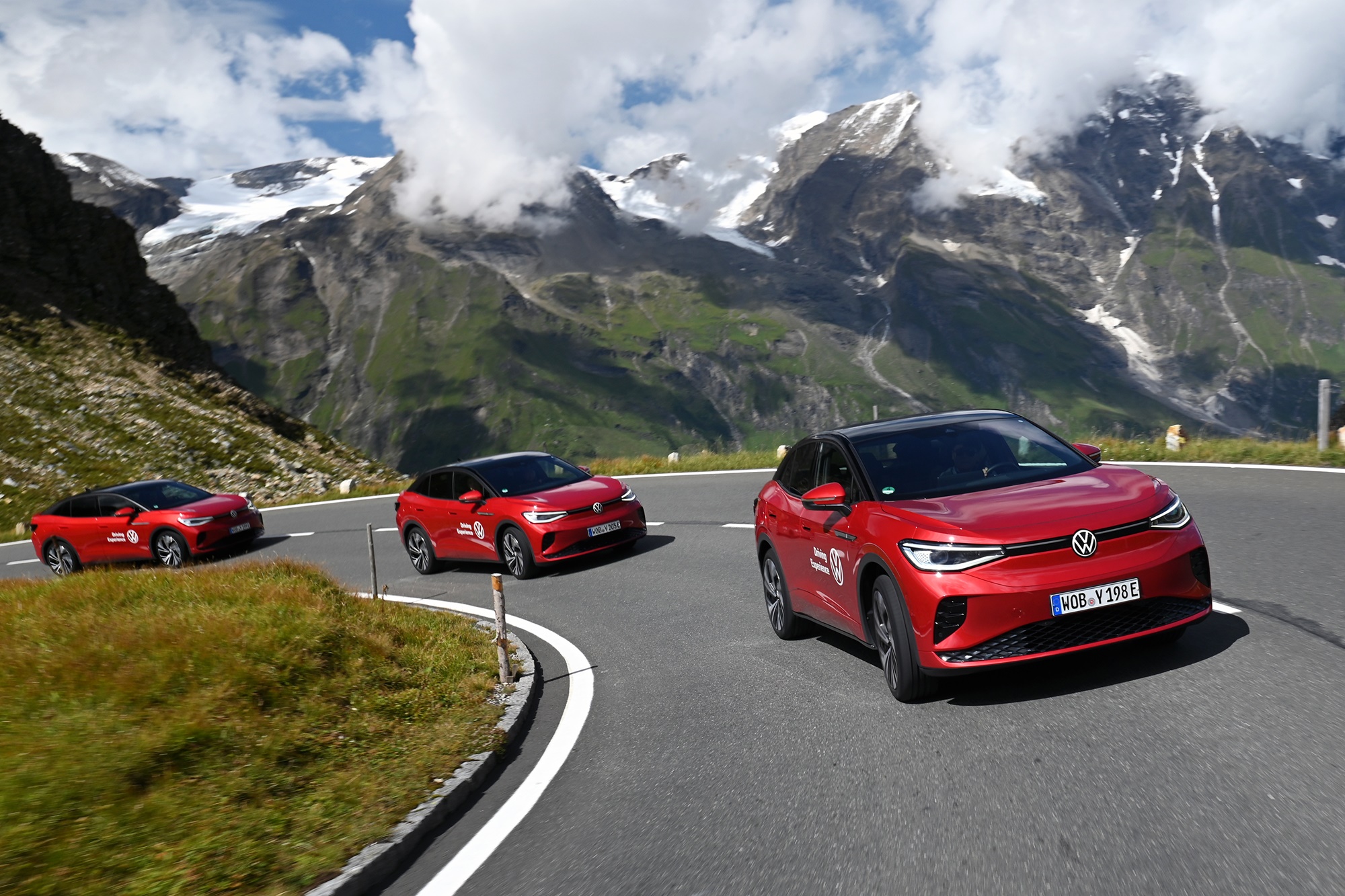
The driving range is 82km, and the distance to the destination is 79km. It would be a disaster if we encounter an uphill section. Traveling 1km uphill can decrease the driving range by over 5km. It’s a precarious situation where we could be stranded if the battery runs low midway. The winding mountain road, with its repeated ascents and descents, made it challenging to gauge our journey accurately.
I started from Munich, Germany, driving the Volkswagen ID.5 GTX, heading towards Grossglockner near Salzburg, Austria. Grossglockner is the highest peak in the Austrian Alps, standing at 3,789 meters above sea level. The road reaches its highest point at 2,500 meters, the most elevated area in Austria. Passing this point means that no matter which direction we take, the path is generally downhill. We were in the best conditions for a miraculous event. Fortunately, we had already passed the peak.
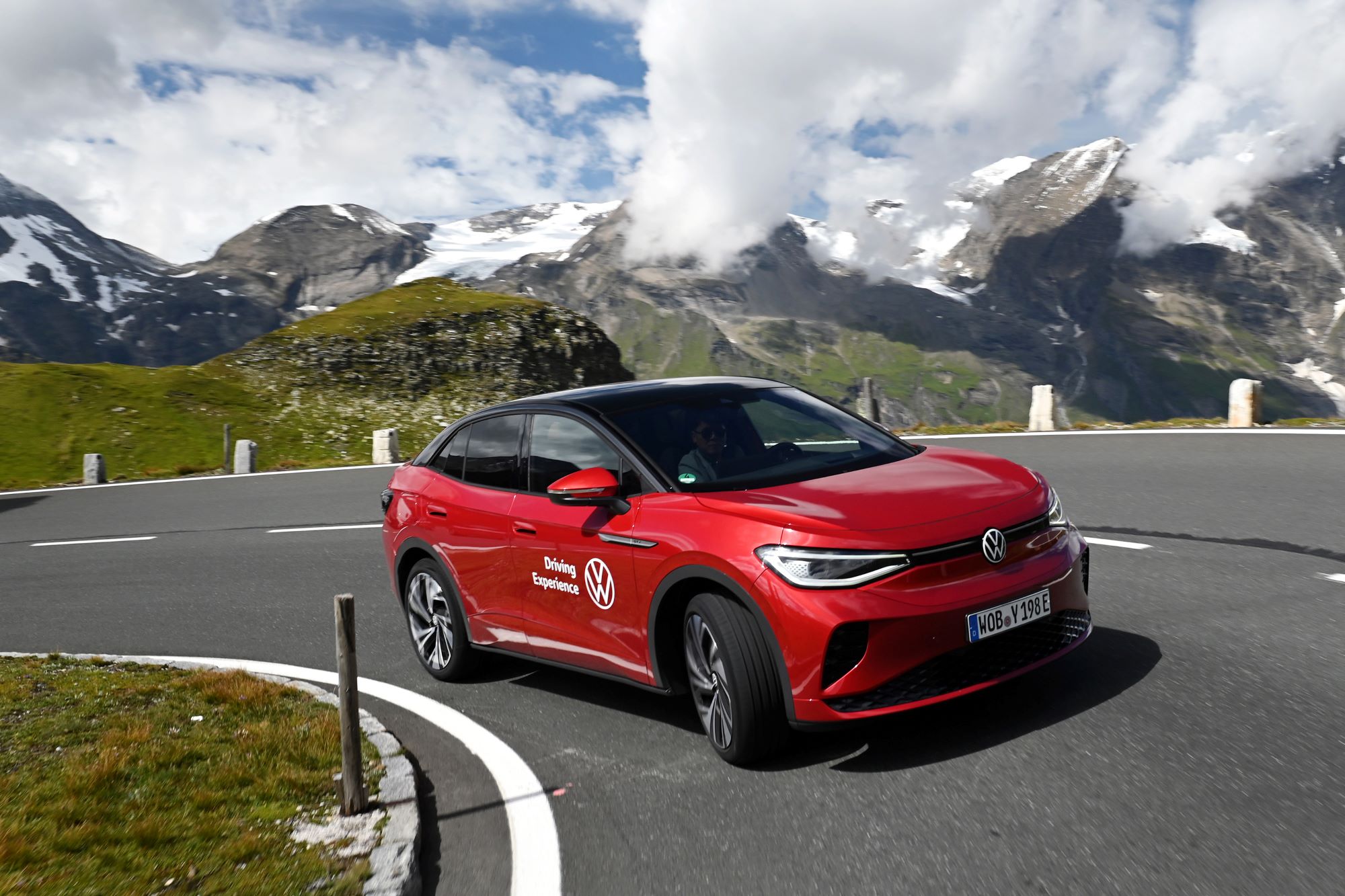
I cautiously maneuvered the car. Naturally, I selected Eco mode and turned off the air conditioning. As I rolled down the window, the cool air of late summer in the Alps rushed in. It was a hundred times better than the air conditioning. I regretted not opening the window sooner.
My fingers were busy. I switched from D to B mode during a steep descent and returned to D as the momentum slowed, repeating this action. In B mode, the regenerative braking system operates actively, accumulating a significant amount of electricity. This is a strategy for a long and smooth ride.
While the distance to the destination decreased, the available driving range increased as I drove. After covering the entire 79km, the driving range still indicated 149km remaining. A miraculous occurrence possible due to the electric vehicle’s capabilities.
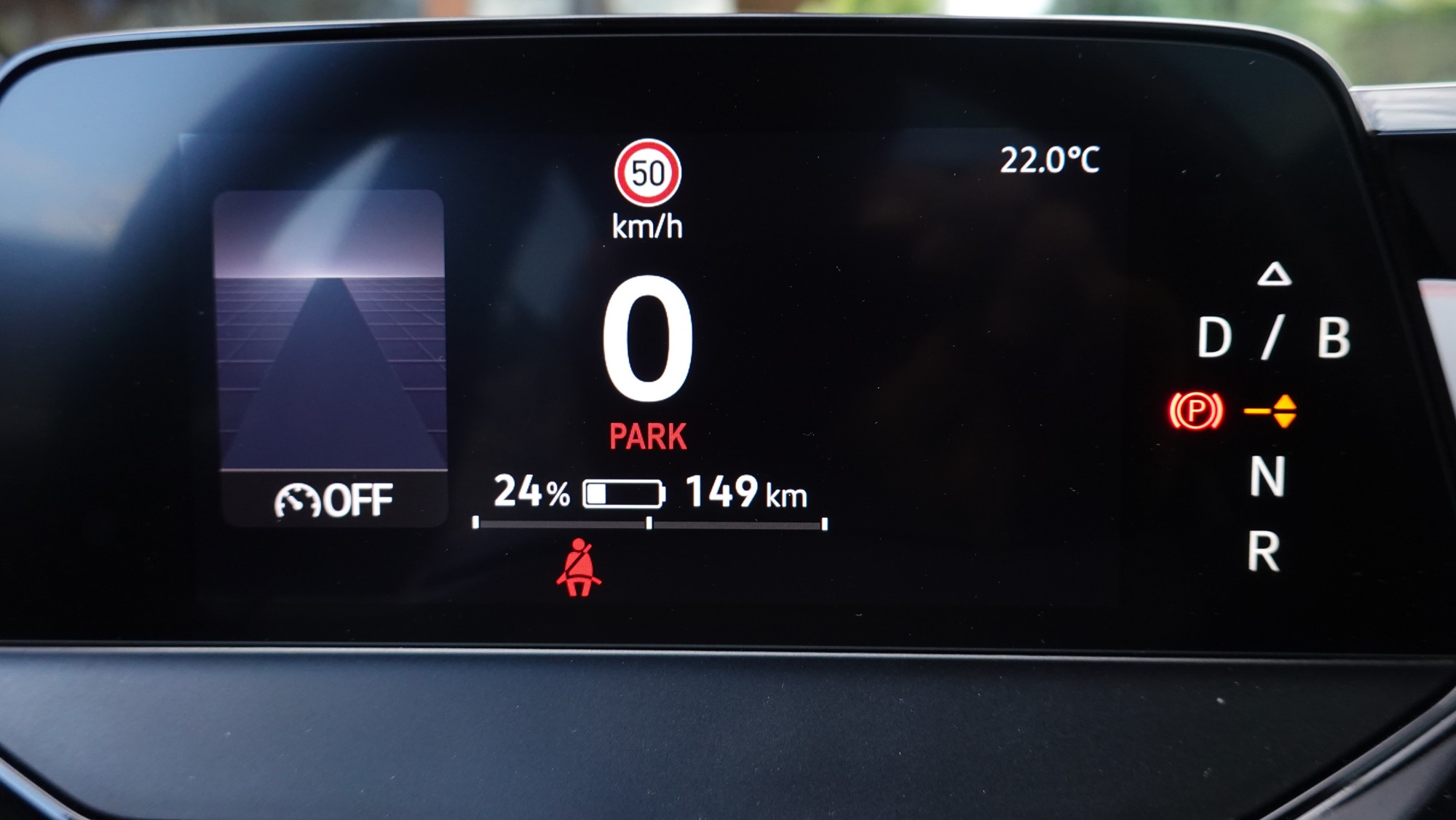
The ID.5 GTX was an endless fountain of energy. As I drove, the battery level kept increasing, turning it into a moving power plant. This was thanks to regenerative braking. Usually, the motor drives the wheels, but on a downhill, the wheels drive the motor. The revolving wheels generate electricity and accumulate it in the battery. While you wouldn’t expect gasoline to accumulate in an empty fuel tank, it’s common for electricity to gather in an empty battery—a miraculous event that’s, upon reflection, completely ordinary ‘science.’
Even so, it’s surprising that a car with 79km left can drive 149km after traveling the initial 80km; this occurs because the driving range is calculated based on average efficiency. If we consider the deteriorated efficiency from climbing, it’s plausible to calculate that we can go 79km more, but after that, we drove downhill, significantly improving the average efficiency. It made it possible to witness a miraculous increase in driving range. On the first day, I drove 418km over 7 hours and 32 minutes at an average speed of 56km/h, with an average efficiency of 17.6kWh/100km, equivalent to 5.68km/kWh.
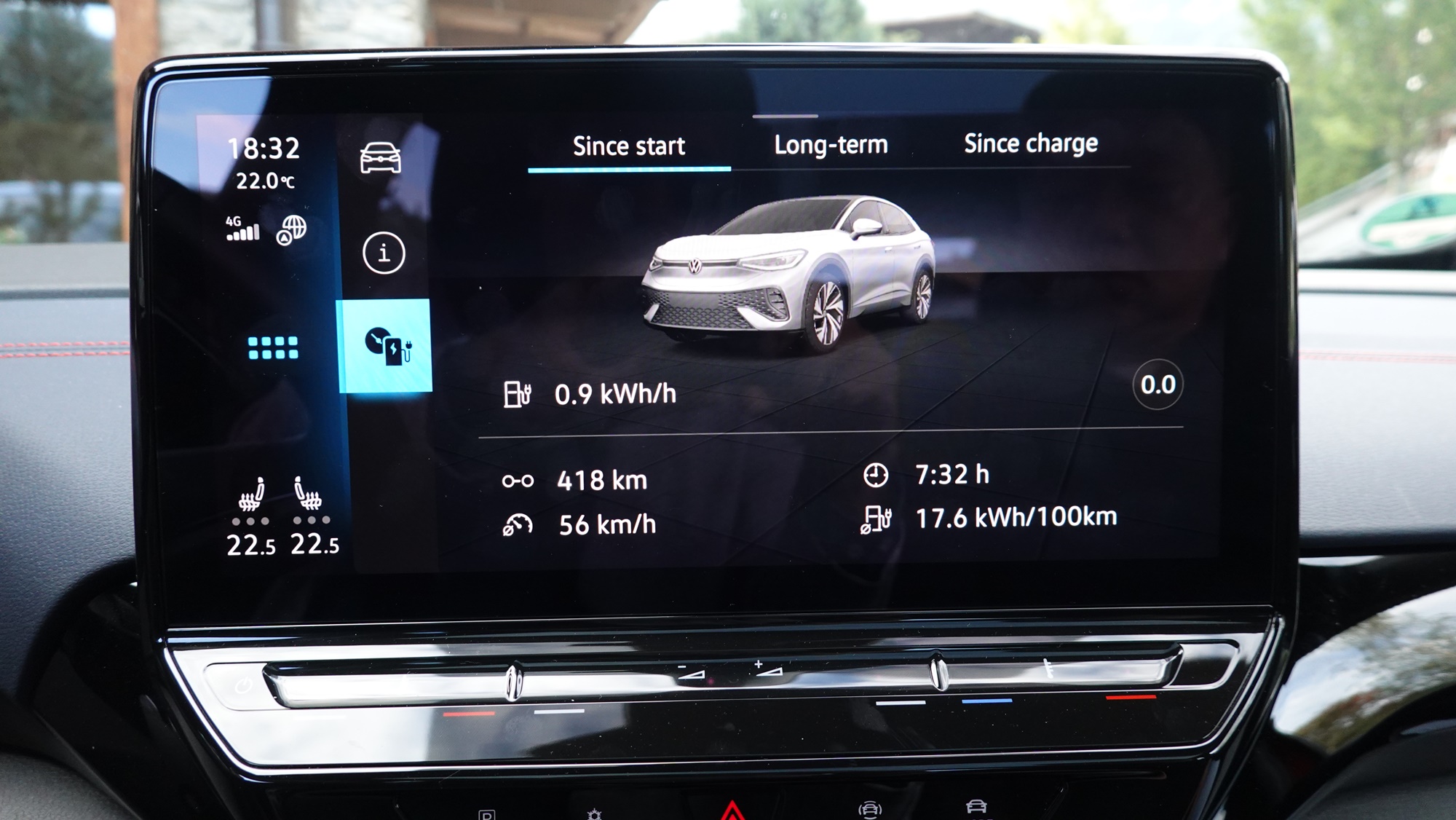
Invited by the Volkswagen Group, I visited Germany for the IAA 2023 and took a three-day test drive of the Volkswagen ID.5 GTX. Volkswagen’s electric vehicles are part of the ID family, which includes ID.3, ID.4, and ID.5. The ID.2 all concept car was introduced last spring, and I had the opportunity to see the ID.7 at this year’s IAA. I had hoped to experience the ID. Buzz, but unfortunately, it didn’t pan out.
The naming is excellent. It’s one of the most sophisticated names in the automotive industry. As electric vehicles were introduced, manufacturers struggled to create names that differentiated body styles and segments. Volkswagen, however, chose a simple name with just two letters and one number: ID. This is the most refined naming scheme, positioning sedans and SUVs distinctly.
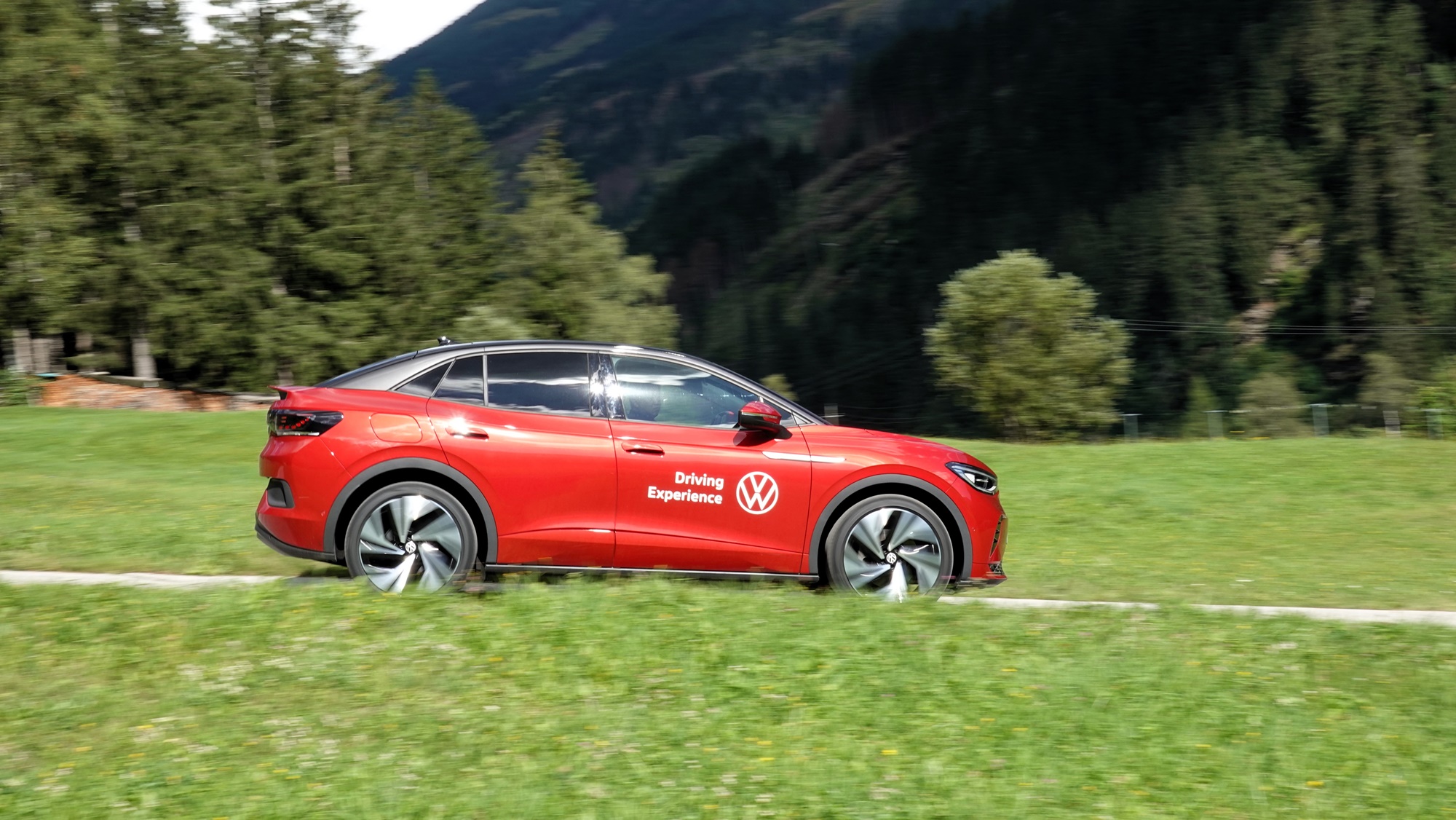
ID.5 is the coupe version of the ID.4. Since ID.4 is an SUV, ID.5 is a coupe-style SUV. Both share the same powertrain. The GTX designation derives from the Grand Tourer GT, with the ‘X’ implying ‘everything’ or ‘unknown.’ It has a different appearance from ID.4, particularly in body style, roofline, and around the C-pillar, but the presence of a rear spoiler indicates it’s an ID.5 GTX.
The ID.5 GTX was the first to bear the GTX badge in the ID family. Unveiled in November 2021, the ID.5 GTX is the first all-electric performance model, developed on Volkswagen’s Modular Electric Drive Matrix (MEB) platform.
Looking at the specifications, its peak output of 299 horsepower may seem a bit lacking to be labeled high-performance. The top speed is also capped at 180km/h. Even in Germany’s unrestricted autobahn, it couldn’t exceed 200km/h. It takes 6.3 seconds to accelerate from 0 to 100km/h, which is relatively fast. Rather than high-performance, it could be regarded as ‘limited high-performance’ due to its dual motor all-wheel drive system. Regardless, having two motors does enhance performance, so it’s reasonable to understand GTX as an all-wheel-drive electric vehicle.
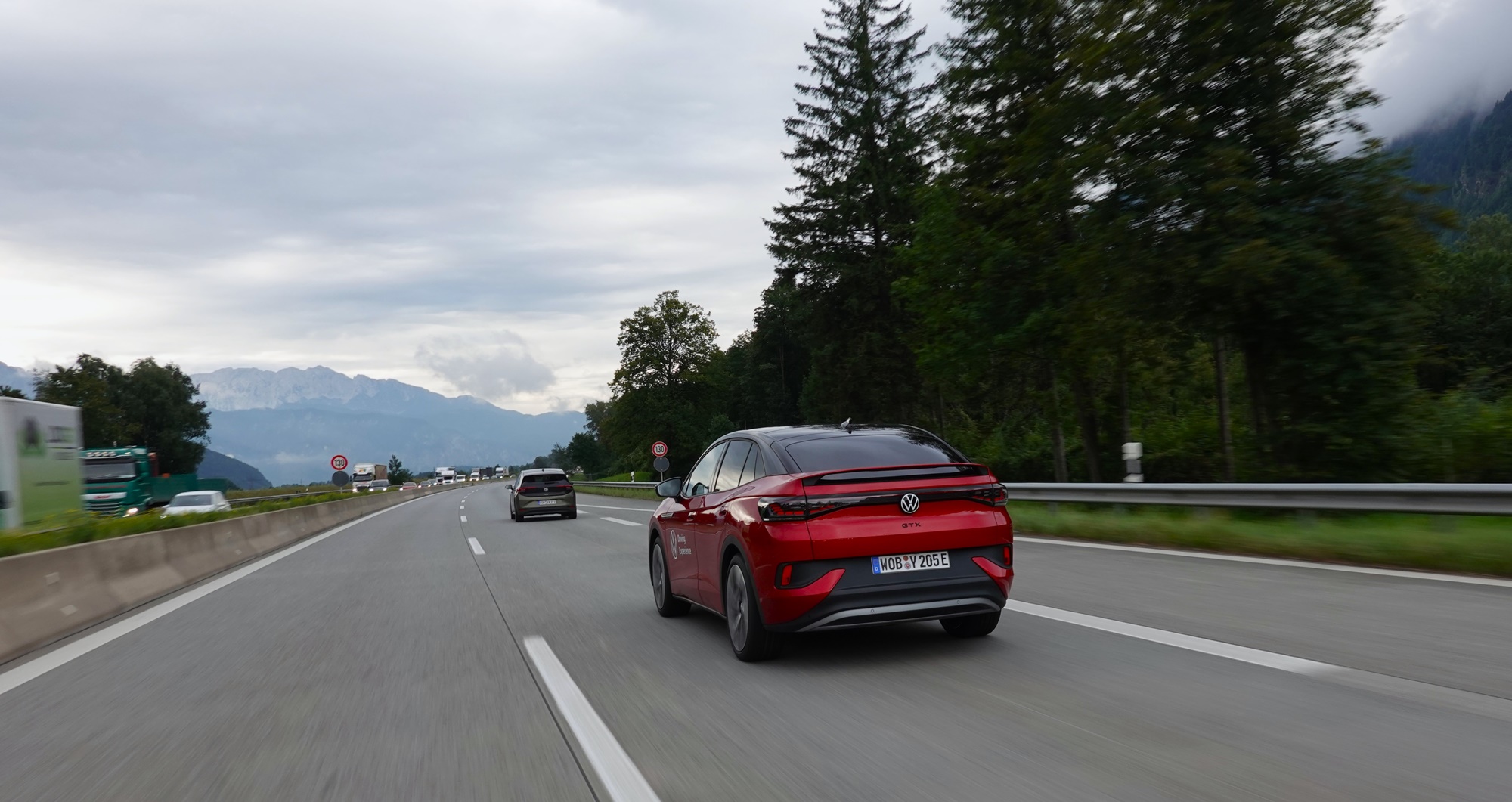
The driving stability offered by all-wheel drive was remarkable. The road leading to Kaiser Franz-Josefs Höhe viewpoint, nestled in the heart of the Hohe Tauern National Park, is renowned for its winding ‘High Alpine Road.’ I navigated the numerous hairpin turns with precision, showcasing the car’s agility. It was a rare sunny weekend, making the roads bustling with cars and motorcycles. The sight of so many vehicles and bikes moving in an orderly manner left a lasting impression. They executed overtakes without aggressive acceleration, creating a surprisingly smooth flow.
Overtaking occurs on the left, while cars entering a roundabout first have the right of way. Keeping it simple like this makes driving in Europe quite manageable. Remember that the unrestricted speed areas on the autobahn are designated separately.
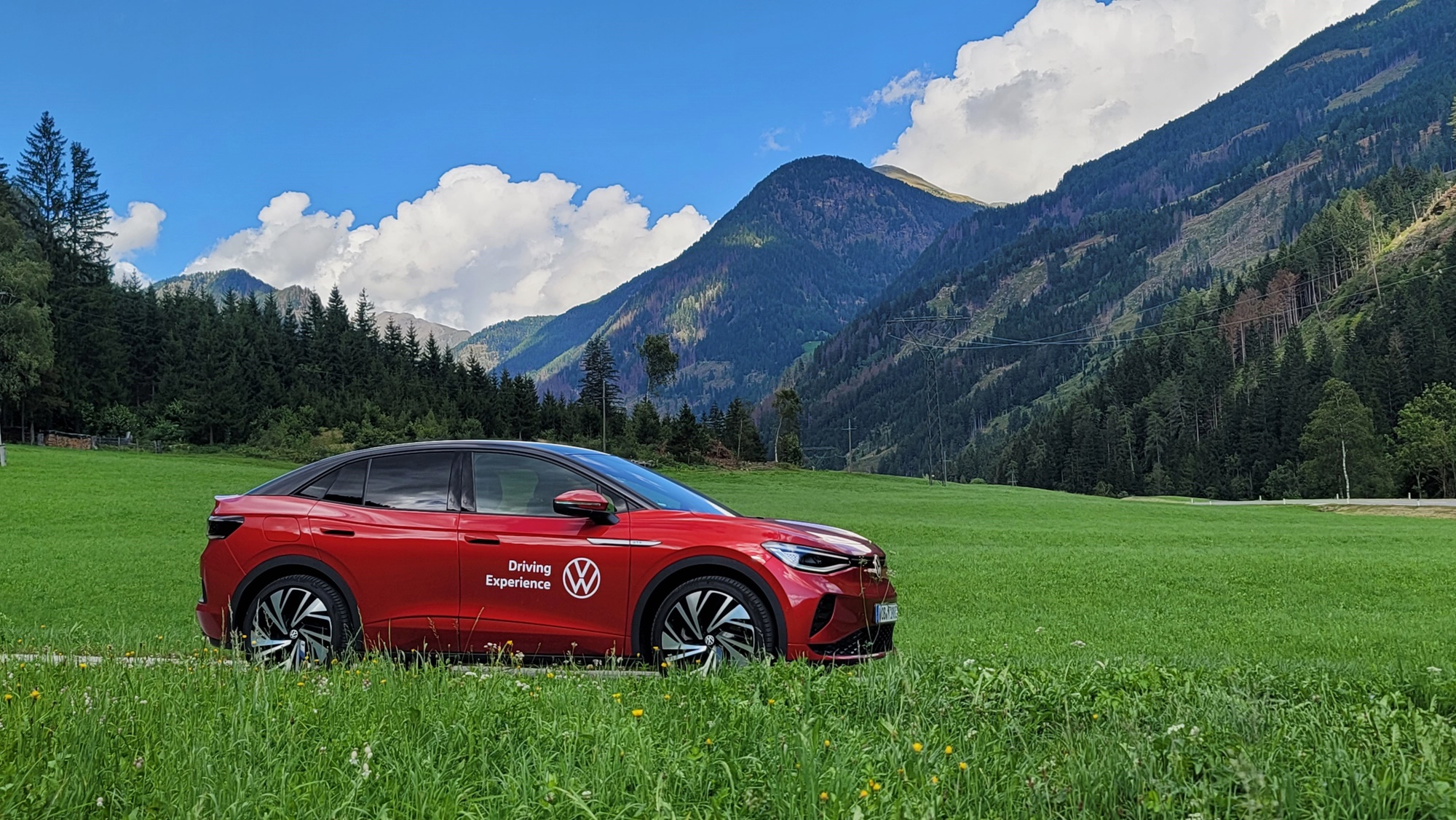
It was quiet. As long as the road was in good condition, the silence in the cabin felt unnerving. Occasional soft sounds could be heard, but for the most part, it remained remarkably quiet. This quietness was an issue; small noises became amplified. The rustling and the sound of luggage sliding in the trunk were noticeably loud. The silence sometimes turned into a distraction.
With a drag coefficient of 0.27, it’s an astounding achievement. Achieving such a low drag coefficient in an SUV is a testament to the power of design. Lowering air resistance, they’ve created a car that is both quiet and fuel-efficient.
The 82kWh lithium-ion battery allows for a usable capacity of 77.0kWh. About 5kWh is reserved for safety margins. According to WLTP standards, the driving range on a single charge is 480km. However, under the more stringent certification conditions in South Korea, the range may become slightly shorter.
Data from Europe indicates that in the worst-case scenario, driving at minus 10 degrees Celsius with heating systems on may yield a range of 295km on highways, while at 23 degrees Celsius without using air conditioning, it can achieve 590km in urban driving. With attentive economic driving, it may exceed 500km.
However, this refers to using the battery to 100%. No one would recklessly drive until the battery is dead at around 10% remaining. For battery safety reasons, it’s recommended to charge between 80-90% rather than to 100%. If you charge from 10% to 90%, the actual usable battery range would essentially be from 10-90%, or about 80% of the total. In this case, after approximately 380km, you’d need to recharge. It’s a sufficient distance. The car supports slow AC charging up to 11kW and rapid DC charging up to 175kW. Charging from 40km to 320km range takes about 30 minutes using fast charging.
September in Germany and Austria was beautiful. Over three days of driving the ID.5 GTX, we covered 800km with the best weather continuing each day. Someone in our group must have saved a country in a past life.
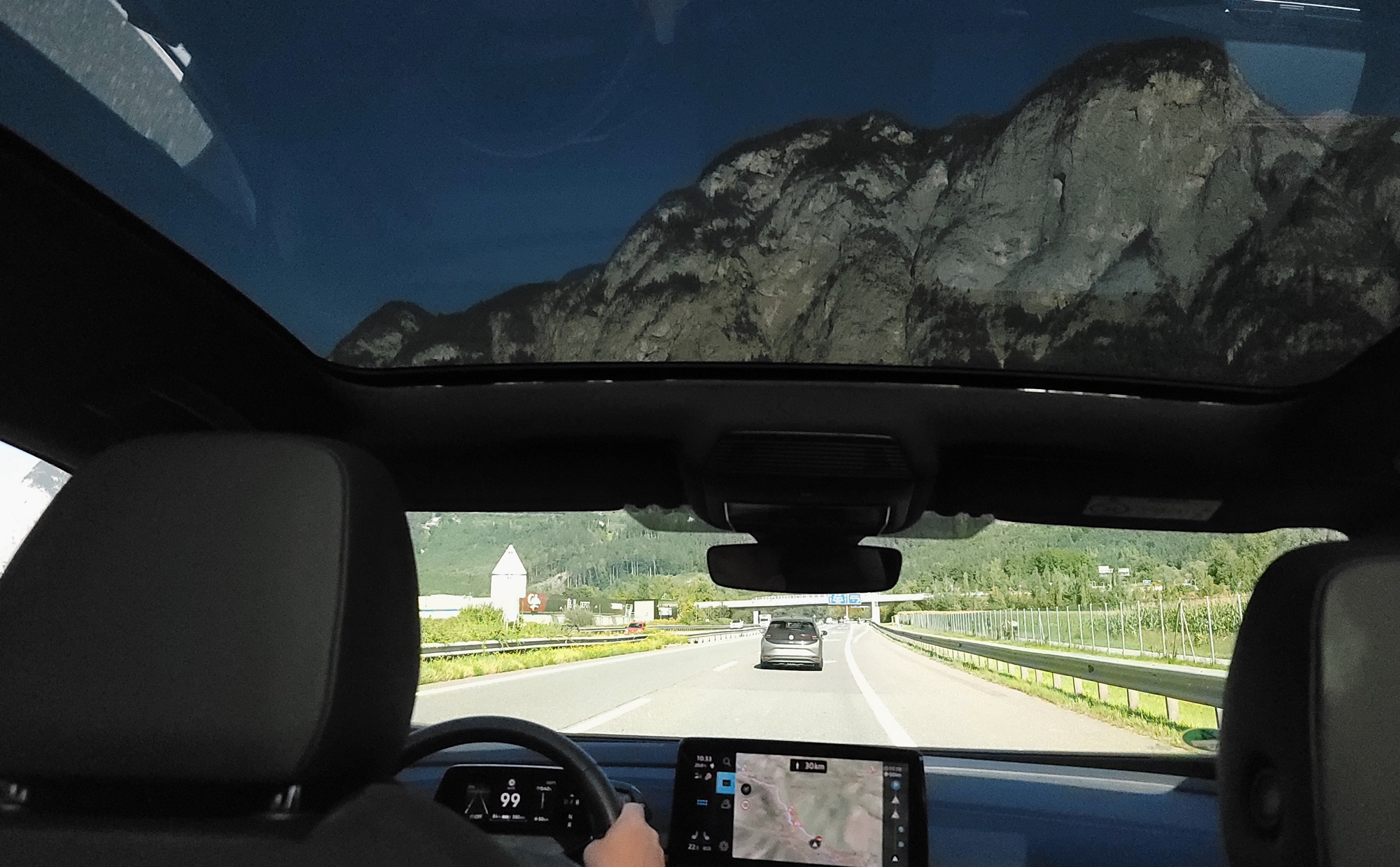
The test drive route was also fantastic. The autobahn from Munich to the Austrian border, alongside the winding roads of Grossglockner, all captured under the stunning blue sky. As I prepared to part with the ID.5 GTX, I reflected on how this car might be the pivotal factor in Volkswagen’s transformation. Here in Germany, it’s time to say goodbye; see you again in Korea.
Oh Jong-hoon’s straightforward opinion
I had to frequently switch to B mode to conserve battery power while driving on mountainous roads. Operating it requires some awkwardness with the right hand. It’s a stretch to select B and then return to D again. If paddles could be mounted on the steering wheel for selecting B mode, that would improve the experience considerably. Even with the GT branding, having paddles would enhance the appeal.
Munich, Germany = Oh Jong-hoon yes@autodiary.kr

